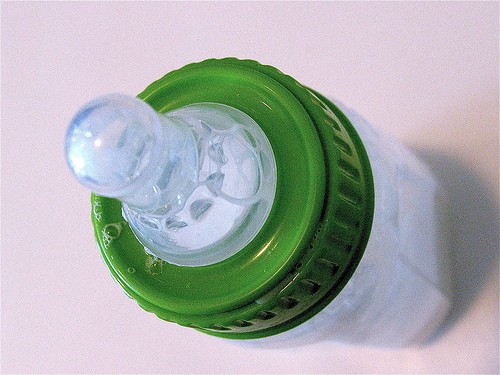
Using bottles to feed the baby can increase the risk of developing a serious form of stomach obstruction, researchers warn parents.
The study reported in JAMA Pediatrics found that bottle feeding doubled the risk of hypertrophic pyloric stenosis (HPS), in infants. The condition, caused by thickening of the smooth muscle layer of the pylorus- the passage between the stomach and small intestines- leads to projectile vomiting and surgery is the only way to treat the condition. Nearly two babies per 1,000 births are affected with the condition.
For the study, Jarod P. McAteer from the Seattle Children's Hospital in the US and team looked at 714 babies diagnosed with hypertrophic pyloric stenosis (HPS) and compared them to another group of babies without the condition. All the babies were born between 2003 and 2009. Researchers recorded prevalence of breastfeeding among the infants.
They found solid evidence to prove that breastfeeding helped prevent the condition. The number of hypertrophic pyloric stenosis (HPS) cases was relatively low in 2009 (9 per 10,000 births) compared to 2003 (14 per 10,000 births), while the rate of breastfeeding went up simultaneously in the same period (94 percent and 80 percent respectively). Hypertrophic pyloric stenosis was more prevalent among babies who were bottle fed (19.5 percent).
"From a clinician's standpoint, it's just one more study that suggests that breast-feeding is important to the health of a newborn," McAteer told Health Day. "Much data beyond this study supports breast-feeding as a much better thing for the infant. Physicians should take it into account and consider whether it's an important enough factor to influence their counseling of patients."
The risk of developing the condition increased with an increase in maternal age (35 or above) and the number of siblings the baby had. However, the researchers couldn't fully explain the reasons that led to this occurrence. "There may be some kind of an interaction with the mother's age and estrogen that could have some effect on pyloric muscle tone," McAteer told Health Day. "But it's still very much an open question."







!['Lip lock, pressure, pyaar': Vidya Balan- Pratik Gandhi shine in non-judgmental infidelity romcom Do Aur Do Pyaar [ Review]](https://data1.ibtimes.co.in/en/full/797104/lip-lock-pressure-pyaar-vidya-balan-pratik-gandhi-shine-non-judgmental-infidelity-romcom.jpg?w=220&h=138)








